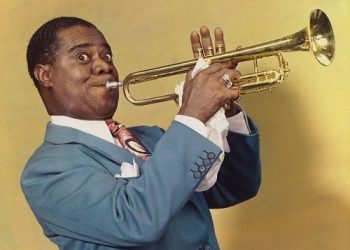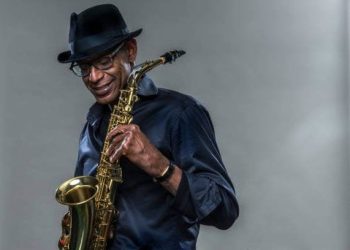The soulful resonance of the saxophone has captivated music enthusiasts for decades, creating an indelible mark on the world of jazz, blues, and beyond. As we embark on a sonic journey through the annals of musical history, it becomes imperative to pay homage to the virtuosos who have elevated the saxophone to unparalleled heights. The “15 Best Saxophone Players of All Time” stand as maestros who have not only mastered the technical intricacies of this iconic instrument but have also infused their unique artistry into the very fabric of our musical heritage. From the smoky jazz clubs of New Orleans to the grand concert halls of Europe, these saxophonists have transcended genres and eras, leaving an indomitable legacy that continues to resonate with audiences worldwide. Each player on this illustrious list has contributed a distinctive voice to the saxophone’s melodic tapestry, from the sultry tones of tenor saxophones to the piercing brilliance of altos. Join us as we delve into the lives and careers of these musical luminaries, exploring the anecdotes, innovations, and timeless performances that have secured their places as the foremost saxophone virtuosos. In celebrating their contributions, we not only acknowledge the technical prowess that defines their mastery but also the profound emotional depth and artistic innovation that have left an indelible mark on the evolution of music. As we traverse the realms of bebop, swing, and avant-garde, we will uncover the stories behind each artist’s rise to prominence, examining the impact they’ve had on shaping the very essence of saxophone music. So, grab a front-row seat in this symphonic voyage, and let us pay homage to the Top 15 Best Saxophone Players of All Time, whose notes continue to reverberate through the corridors of musical history.
1. Coleman Hawkins
Coleman Hawkins, often hailed as the “Father of the Tenor Saxophone,” stands as one of the most influential and groundbreaking saxophonists in the history of jazz. Born in 1904, Hawkins rose to prominence during the swing era, revolutionizing the way the tenor saxophone was played and establishing it as a formidable solo instrument. His deep, resonant tone and innovative improvisational skills captivated audiences and fellow musicians alike. Hawkins’ career spanned several decades, and he played a crucial role in shaping the evolution of jazz from its traditional roots to the more modern and complex forms that emerged in the mid-20th century.
One of Hawkins’ most celebrated achievements is his iconic recording of “Body and Soul” in 1939, a masterpiece that showcases his virtuosity and emotional expressiveness. His ability to convey a wide range of emotions through his playing set a new standard for saxophonists to come. Beyond his technical prowess, Coleman Hawkins was a mentor to many aspiring musicians, leaving an indelible mark on the jazz community. His legacy endures through the countless recordings and performances that continue to inspire saxophonists across generations, making Coleman Hawkins a true titan in the pantheon of the best saxophone players of all time.
2. Stan Getz
Stan Getz, recognized as one of the preeminent tenor saxophonists in the world of jazz, left an indelible mark with his velvety tone, lyrical style, and remarkable versatility. Born in 1927, Getz rose to fame during the cool jazz and bossa nova eras, showcasing a unique ability to blend bebop intricacy with a smooth, melodic approach. His career spanned over five decades, during which he consistently demonstrated an uncanny ability to adapt to various musical styles and collaborate with a diverse range of artists.
Getz’s most acclaimed work includes his collaborations with guitarist Charlie Byrd, resulting in the groundbreaking album “Jazz Samba” in 1962. This album played a pivotal role in popularizing bossa nova in the United States and earned Getz a Grammy Award for Best Jazz Performance. His rendition of “The Girl from Ipanema” from the 1964 album “Getz/Gilberto” further solidified his status as a jazz icon. Getz’s improvisational skills, marked by a melodic and fluid phrasing, set him apart, making him a respected figure among both jazz enthusiasts and fellow musicians. Stan Getz’s enduring influence is evident in his vast discography and the continued appreciation of his contributions to the evolution of jazz.
3. Charlie Parker
Charlie Parker, commonly known as “Bird,” is heralded as one of the most revolutionary and virtuosic saxophonists in the history of jazz. Born in 1920, Parker emerged during the bebop era, where he played a pivotal role in reshaping the landscape of jazz music. His lightning-fast improvisations, innovative harmonic ideas, and unparalleled technical skill on the alto saxophone became a beacon for the bebop movement, influencing generations of musicians to come.
Parker’s improvisational genius is prominently showcased in his recordings with Dizzy Gillespie, including the iconic “Ko-Ko” and “Salt Peanuts.” His contributions to bebop extended beyond the stage, as he played a key role in the development of a new jazz language that prioritized intricate harmonic progressions and rapid tempos. Despite battling personal challenges, Parker’s musical legacy remains unparalleled, with compositions like “Now’s the Time” and “Yardbird Suite” continuing to be studied and performed by aspiring jazz musicians worldwide.
Charlie Parker’s impact on jazz is immeasurable, and his legacy extends far beyond his tragically short life. His innovations in phrasing, rhythm, and harmonic complexity forever altered the course of jazz, earning him a well-deserved place among the best saxophone players of all time.
4. John Coltrane
John Coltrane, often referred to as “Trane,” is widely regarded as one of the most transformative and influential figures in the history of jazz saxophone. Born in 1926, Coltrane’s career spanned the bebop, hard bop, and modal jazz eras, with his innovative approach to improvisation and composition leaving an enduring impact on the genre. Coltrane’s virtuosity on the tenor and soprano saxophones, combined with his relentless pursuit of musical exploration, elevated him to legendary status.
Coltrane’s time with the Miles Davis Quintet in the 1950s marked the beginning of his ascent to prominence. However, it was during his tenure with his own classic quartet in the 1960s that Coltrane pushed the boundaries of jazz to new frontiers. Albums like “Giant Steps,” “A Love Supreme,” and “My Favorite Things” showcased his evolving style, characterized by extended improvisations, innovative harmonic structures, and a spiritual depth that resonated with audiences on a profound level.
The “sheets of sound” technique, characterized by rapid and dense note patterns, became a hallmark of Coltrane’s playing. His spiritual journey and quest for musical expression went hand in hand, contributing to the profound emotional resonance of his music. John Coltrane’s impact on jazz and music, in general, is immeasurable, and his legacy as one of the greatest saxophonists of all time continues to inspire and captivate listeners around the world.
5. Sonny Rollins
Sonny Rollins, born in 1930, stands as one of the most prolific and inventive tenor saxophonists in the history of jazz. With a career spanning over seven decades, Rollins has consistently pushed the boundaries of the genre, earning him the nickname “Saxophone Colossus.” His innovative improvisations, distinctive sound, and powerful stage presence have solidified his reputation as a true jazz icon.
Rollins first gained prominence in the 1950s, playing alongside jazz legends like Miles Davis, Thelonious Monk, and Max Roach. His recordings, such as “Saxophone Colossus” and “Way Out West,” showcase his impeccable technique, rhythmic prowess, and knack for creating memorable and melodic solos. Rollins’ ability to seamlessly blend elements of bebop, hard bop, and free jazz has contributed to his enduring appeal.
One of his defining characteristics is his penchant for extended solos, where he weaves intricate musical narratives, exploring themes with creativity and spontaneity. His performance style often includes rhythmic motifs, unexpected twists, and a robust, husky tone that distinguishes him from other saxophonists.
Beyond his technical brilliance, Sonny Rollins’ dedication to constant self-improvement and his fearless exploration of new musical territories have made him a revered figure in the jazz community. His influence on successive generations of saxophonists is immeasurable, making Sonny Rollins a true giant in the pantheon of the best saxophone players of all time.
6. Ornette Coleman
Ornette Coleman, born in 1930, is renowned for his groundbreaking contributions to the world of jazz as an avant-garde alto saxophonist, composer, and innovator. A key figure in the free jazz movement, Coleman challenged traditional conventions and expanded the possibilities of improvisation. His unorthodox approach to harmony and melody, coupled with a distinctive raw and emotive playing style, set him apart as a pioneering force in the evolution of jazz.
Coleman’s most influential work emerged in the late 1950s and early 1960s with albums like “The Shape of Jazz to Come” and “Free Jazz: A Collective Improvisation.” In these recordings, he introduced the concept of “harmolodics,” a musical theory emphasizing the equal importance of harmony, melody, and rhythm in improvisation. This departure from traditional jazz structures marked a paradigm shift and inspired a generation of musicians to explore new avenues of expression.
As a saxophonist, Coleman’s playing style was characterized by angular and unpredictable phrasing, often eschewing conventional tonalities. His avant-garde compositions challenged the listener’s expectations and encouraged a more open-minded approach to musical interpretation. Coleman’s impact on jazz went beyond his saxophone prowess; his fearless commitment to artistic exploration has influenced musicians across genres and continues to shape the avant-garde and experimental aspects of contemporary music. Ornette Coleman’s legacy as a visionary saxophonist and musical trailblazer remains a testament to the transformative power of innovation in jazz.
7. Cannonball Adderley
Cannonball Adderley, born in 1928, was a charismatic alto saxophonist whose infectious energy and soulful playing style made him a beloved figure in the world of jazz. With a career that spanned from the hard bop era to the beginnings of jazz fusion, Adderley’s contributions as a bandleader and sideman have left an indelible mark on the genre.
Adderley gained prominence in the 1950s when he joined forces with his brother, cornetist Nat Adderley, and formed the Cannonball Adderley Quintet. The group’s dynamic performances and accessible yet adventurous compositions, such as “Mercy, Mercy, Mercy,” helped bridge the gap between jazz and popular music, garnering a wide audience. Cannonball’s rich, blues-infused sound and his ability to seamlessly blend technical virtuosity with heartfelt expressiveness contributed to his universal appeal.
One of Adderley’s most notable collaborations was with Miles Davis, where his distinctive alto saxophone contributed to the seminal album “Kind of Blue.” His improvisational skills and engaging stage presence set him apart, earning him critical acclaim and establishing him as a major force in jazz.
Cannonball Adderley’s legacy extends beyond his role as a saxophonist; his work as an ambassador for jazz, his mentorship of emerging talents, and his ability to connect with audiences through a wide range of musical styles have solidified his place as one of the best saxophone players of all time. His impact resonates in the continued appreciation for his recordings and the enduring influence on succeeding generations of jazz musicians.
8. Gerry Mulligan
Gerry Mulligan, born in 1927, was a baritone saxophonist, composer, and arranger whose distinctive sound and inventive approach left an enduring impact on jazz. A central figure in the cool jazz movement, Mulligan’s contributions as both a performer and a bandleader showcased his versatility and ability to shape the evolution of jazz.
Mulligan first gained attention in the late 1940s, playing with Stan Kenton’s orchestra. However, it was his collaboration with trumpeter Chet Baker in the early 1950s that brought him widespread acclaim. The Gerry Mulligan Quartet, known for its piano-less format, introduced a new level of interplay and improvisation between the saxophone and trumpet, creating a unique and transparent sound. The quartet’s recordings, such as “Walking Shoes” and “Bernie’s Tune,” exemplify Mulligan’s ability to craft melodic, cool-toned compositions.
Mulligan’s mastery of the baritone saxophone, with its rich, deep tones, set him apart in a field dominated by alto and tenor saxophonists. His inventive arrangements and compositions, often marked by contrapuntal lines and sophisticated harmonies, further showcased his musical prowess. Mulligan’s career extended beyond the cool jazz era, as he continued to experiment with various musical forms, collaborating with artists from different genres.
Gerry Mulligan’s legacy as a baritone saxophonist and an influential figure in jazz endures through his numerous recordings, innovative compositions, and the lasting impact he had on the evolution of the genre. His ability to navigate diverse musical landscapes while maintaining a signature sound makes him a noteworthy figure among the best saxophone players of all time.
9. Wayne Shorter
Wayne Shorter, born in 1933, is a highly esteemed saxophonist and composer whose contributions to jazz have spanned several decades. Renowned for his inventive improvisational style and prolific career, Shorter has left an indelible mark on the genre, influencing both traditional and avant-garde jazz.
Shorter first gained recognition in the late 1950s as a member of Art Blakey’s Jazz Messengers, where he showcased his prowess on the tenor saxophone. His ability to seamlessly blend complex harmonic structures with a lyrical approach caught the attention of both critics and fellow musicians. In the 1960s, Shorter joined the Miles Davis Quintet, making significant contributions to iconic albums like “E.S.P.” and “Miles Smiles.”
As a member of the second great Miles Davis Quintet, Shorter’s compositions, marked by their intricate melodies and open structures, played a crucial role in the evolution of post-bop and modal jazz. His innovative work as a solo artist, especially on albums like “Speak No Evil” and “Adam’s Apple,” further solidified his reputation as a leading figure in the jazz world.
Wayne Shorter’s later collaborations with Weather Report, a pioneering jazz-fusion band, showcased his ability to adapt to new musical landscapes. His tenure with the band highlighted his exploration of electronic instruments and the fusion of various genres, making him a versatile force in the ever-evolving jazz landscape.
A multiple Grammy Award-winner, Wayne Shorter’s impact extends beyond his saxophone mastery; his visionary approach to composition and improvisation continues to influence musicians across genres. As a living legend in jazz, Shorter remains an inspiration for aspiring saxophonists and a key figure among the best saxophone players of all time.
10. Paul Desmond
Paul Desmond, born in 1924, was an iconic alto saxophonist best known for his smooth, lyrical playing style and his integral role in the Dave Brubeck Quartet. His contribution to the classic 1959 album “Time Out,” which featured the groundbreaking composition “Take Five,” solidified his place in jazz history.
Desmond’s sound, characterized by a cool and melodic approach, contrasted with the more fiery styles prevalent in the jazz scene. His ability to craft memorable and accessible melodies, as demonstrated in “Take Five,” contributed to the widespread popularity of the Dave Brubeck Quartet. The success of the album marked a rare instance of a jazz instrumental track becoming a mainstream hit.
Desmond’s improvisational skills were marked by a keen sense of wit and understated virtuosity. His unique harmonic approach, often favoring lighter, more whimsical phrasing, set him apart in the world of jazz alto saxophonists. His collaborations with Brubeck, including albums like “Brubeck/Desmond” and “Time Further Out,” showcased their exceptional musical chemistry.
Beyond his work with Brubeck, Paul Desmond’s solo recordings, such as “Pure Desmond” and “Bossa Antigua,” highlighted his ability to explore different genres, including bossa nova. His legacy endures not only through his contribution to the Dave Brubeck Quartet but also as a distinctive voice in the world of jazz alto saxophone, influencing subsequent generations with his tasteful and lyrical approach. Paul Desmond remains a beloved figure among the best saxophone players of all time.
11. Dexter Gordon
Dexter Gordon, born in 1923, was a towering figure in the world of jazz, known for his commanding presence on the tenor saxophone and his significant contributions to both bebop and hard bop. Standing at 6 feet 6 inches tall, Gordon’s physical stature was matched by the robust and soulful sound he produced from his instrument.
Gordon’s career took off in the bebop era, and he played a pivotal role in the development of this revolutionary style. His association with other bebop luminaries, including Charlie Parker and Dizzy Gillespie, helped establish him as a leading tenor saxophonist. However, it was during his time with the Blue Note label in the 1960s that Gordon achieved widespread recognition for his work as a bandleader.
One of his most celebrated albums, “Go!” (1962), showcases Gordon’s impeccable phrasing, powerful tone, and inventive improvisations. His ability to balance technical prowess with a deep emotional connection to the music endeared him to audiences and fellow musicians alike. Gordon’s long, expressive lines and rhythmic sophistication set him apart, making him a standout in the crowded field of tenor saxophonists.
Dexter Gordon’s impact extended beyond the studio and stage; he was a central figure in the jazz community, mentoring younger musicians and contributing to the continuity of the jazz tradition. His later career saw a successful foray into acting, notably with an Academy Award-nominated performance in the film “Round Midnight” (1986). Dexter Gordon’s enduring legacy as a charismatic and influential tenor saxophonist places him among the best in the history of jazz.
12. Sonny Stitt
Sonny Stitt, born in 1924, was a versatile and highly accomplished saxophonist, known for his exceptional skill on both the alto and tenor saxophones. A prolific figure in the world of jazz, Stitt’s career spanned several decades, and his contributions to bebop, hard bop, and soul jazz left an enduring mark on the genre.
Stitt’s early years were marked by collaborations with prominent musicians such as Charlie Parker and Dizzy Gillespie, where he gained recognition for his ability to emulate the style of the legendary Charlie Parker. Often criticized for this resemblance, Stitt eventually asserted his own distinct voice and developed a unique approach to improvisation that showcased his technical brilliance and melodic inventiveness.
As a leader and sideman, Stitt recorded prolifically, producing a vast discography that attests to his versatility and mastery of different jazz styles. His work with fellow saxophonist Gene Ammons on the album “Boss Tenors” exemplifies his ability to engage in spirited and soulful musical dialogues.
Sonny Stitt’s command of the saxophone, whether navigating intricate bebop lines or delivering soulful ballads, demonstrated his virtuosity and deep understanding of the jazz tradition. His influence can be heard in the playing of numerous saxophonists who followed him. Sonny Stitt’s enduring legacy in the annals of jazz history solidifies his place among the best saxophone players of all time.
13. Lester Young
Lester Young, born in 1909, was a revolutionary tenor saxophonist who played a pivotal role in the evolution of jazz during the swing era. Known for his distinctive, laid-back playing style, Young earned the nickname “Prez” (short for President), a moniker that reflected the high regard in which he was held by his peers.
Young’s innovative approach to the tenor saxophone departed from the more forceful and assertive styles of his contemporaries. His light, airy tone, unique phrasing, and use of subtlety and nuance set him apart. Young’s contributions to the Count Basie Orchestra during the late 1930s and early 1940s played a significant role in shaping the band’s sound and success.
One of his most famous recordings, “Lester Leaps In,” showcases his melodic improvisations and his ability to create memorable musical phrases. Additionally, his collaborations with iconic vocalist Billie Holiday, notably on the classic “Lady Sings the Blues,” further elevated his status in the jazz world.
Lester Young’s influence extended beyond his playing style; he introduced a more relaxed and cool demeanor to jazz, influencing not only saxophonists but also shaping the emerging bebop movement. Despite facing racial prejudice during his career, Young’s impact was profound, and he remains a revered figure. His legacy is celebrated not only for his musical contributions but also for his role in shaping the cultural and stylistic landscape of jazz, securing his place among the best saxophone players of all time.
14. Michael Brecker
Michael Brecker, born in 1949, was a highly influential and virtuosic tenor saxophonist, renowned for his technical prowess, innovative approach to improvisation, and prolific contributions to the worlds of jazz and contemporary music. His impact extended across multiple genres, making him one of the most sought-after and respected saxophonists of his time.
Brecker’s career took off in the 1970s, and he quickly gained recognition for his versatility, performing with a wide array of artists ranging from jazz legends like Herbie Hancock and McCoy Tyner to rock icons like Paul Simon and Steely Dan. His work as a founding member of the jazz fusion band Weather Report showcased his ability to navigate complex harmonic structures and intricate arrangements.
As a solo artist, Brecker released numerous albums that demonstrated his mastery of the saxophone and his innovative spirit. His album “Pilgrimage” (2007), released shortly before his untimely death, received critical acclaim and won two posthumous Grammy Awards, solidifying his enduring influence.
Michael Brecker’s technical facility on the saxophone was unparalleled, characterized by his seamless blending of intricate patterns, harmonic complexity, and a rich, expressive tone. His impact on the development of contemporary jazz and his ability to bridge the gap between genres left an indelible mark, influencing countless saxophonists and musicians across the spectrum of modern music. Michael Brecker’s legacy continues to resonate, establishing him as one of the best and most innovative saxophone players of all time.
15. Sidney Bechet
Sidney Bechet, born in 1897, was a pioneering and influential figure in the early history of jazz, known for his virtuosity on the soprano saxophone and clarinet. As one of the first significant soloists in jazz, Bechet’s innovative and expressive playing style contributed to the development of the genre during its formative years.
Bechet’s early career saw him performing in New Orleans alongside jazz pioneers like Louis Armstrong. His groundbreaking recordings, such as “Kansas City Blues” and “Summertime,” showcased his remarkable ability to blend traditional New Orleans jazz with elements of the blues and classical music.
A master of improvisation, Bechet’s soprano saxophone playing was marked by a warm, vocal quality, and his use of vibrato and melodic embellishments set him apart. His clarinet playing was equally distinctive, with a clear and bright tone that became a signature element of his sound.
Sidney Bechet’s influence extended beyond his instrumental skills; he was one of the first African American musicians to gain international acclaim and recognition. His contributions to the spread of jazz throughout Europe during the 1920s and 1930s helped establish the genre as a global phenomenon.
Sidney Bechet’s legacy lives on as a trailblazer in the world of jazz, and his impact on the development of solo improvisation continues to be celebrated. His groundbreaking contributions to the soprano saxophone and clarinet make him a foundational figure among the best saxophone players in the history of jazz.









